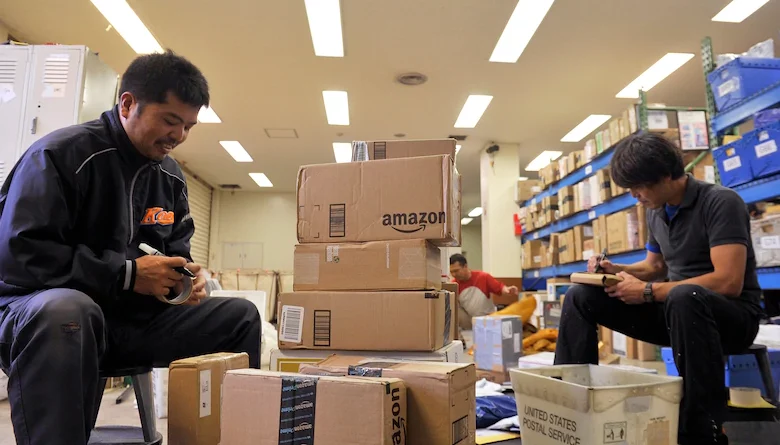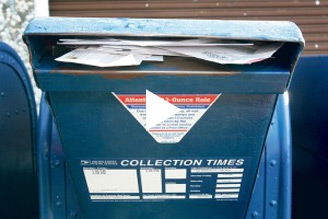This article originally appeared in the American Conservative on April 5, 2018.
The United States Postal Service is deep in the red, with a dwindling list of options available to stop the bleeding. USPS officials and Congress have continually neglected to employ sound financial management, which has resulted in $15 billion in debt and more than $100 billion in unfunded liabilities for the Postal Service. Despite inept leadership, anyone bringing attention to these issues is bound to be repeatedly attacked as a corporate shill trying to harm the USPS.
Over the past week, however, feathers have been particularly ruffled by President Trump, who has criticized Amazon’s agreements with the USPS as costly and unproductive. These accusations have elicited a mountain of commentary, mostly by “fact-checkers” critical of the president’s Twitter blasts. But contrary to defenders of the status-quo, agreements in place do, in fact, bolster Amazon at the expense of customers and taxpayers. These crony carve-outs are just one of many issues plaguing Postal Service finances. But citizens should be especially leery of special arrangements that tilt the playing field in favor of a massive corporate leviathan that has been squeezing out market competition on every level imaginable.
Special arrangements created by the Postal Service ensure that Amazon will get a much larger piece of the action than competing e-commerce companies. A deal carved out in 2013, for instance, commits the Postal Service to delivering Amazon packages on Sundays. This has undoubtedly been a major boon to the e-commerce giant’s bottom line, making two-day Prime delivery a possibility even on weekends. But competitors like Walmart can’t tap into this same advantage, and must wait until the holiday season to take advantage of Sunday delivery by the Postal Service.
Similarly, if Amazon wants to test out a new delivery service concept, they can rely on special Postal Service agreements to get unrivaled access to thousands of households. Before any other player had a shot in the grocery delivery market, the Postal Service penned a trial arrangement with Amazon in 2014 for the San Francisco market. The USPS agreed to make same-day deliveries of AmazonFresh groceries, allowing the company unique access to Postal vehicles for drop-offs between 3 a.m. and 7 a.m. By exclusively offering Amazon the opportunity to establish itself as the first major e-grocer, the Postal Service gave the multi-billion corporation a major leg-up over any potential competitor. By the time that the USPS’s delivery offerings were extended to other retailers after that initial test, Amazon already had a reputation for being the first company in an innovative market.
In responding to accusations of special treatment, the Postal Service is all too eager to point to their rapidly-growing package deliveries. They do seem to have a point—package delivery appears to be anything but a drain on the Postal Service’s finances. In fact, packages “contributed the largest revenue increase” for the agency in 2017, bringing in nearly $20 billion. This is hardly surprising, as customers increasingly ditch crowded mall shopping and go online for easy deliveries of everything from memorabilia to groceries. But the price USPS charges for products still needs to be high enough to offset delivery costs, including equipment and personnel. Due to an outdated method of estimating these costs, the price set by the Postal Service is well south of the market rate. They are actually losing money.
This problem dates back to 2006, when Congress and the Postal Service signed off on a pricing system that made it impossible for the agency to keep up with the times. Back over a decade ago, package delivery costs were only a tiny percentage of total delivery costs, and lawmakers and postal officials strangely assumed that would continue into the future. Even as packages took up a greater of their costs, the USPS didn’t adjust. The agency, for instance, assumes that “competitive products” such as packages are responsible for less than 15 percent of wear-and-tear costs for newly acquired trucks. This is a bizarre assumption, considering that the Postal Service’s new trucks are designed specifically to carry more packages. Assuming that packages will take up most of the room at virtually none of the cost leads the Postal Service to keep package prices artificially low. In fact, an April 2017 Citigroup analysis (which you can read here) found that each package delivered via USPS receives a $1.46 subsidy due to these bizarre price and cost calculations.
There’s nothing wrong with the Postal Service offering bulk discounts and pricing specials impartially, based on sound financial considerations. Government at all levels regularly have these kinds of offers via the contracting process. But a skewed, outdated pricing formula combined with broad shipping privileges afforded to certain companies and not others is not just bad policy, it’s crony capitalism. A lack of transparency in service agreements with clients only encourages shoddy accounting and rigged outcomes.
The Postal Service assures the public they are updating their pricing formulas to reflect the modern market, but as we’ve seen before in postal policy, promises and pledges often go nowhere. Instead of attacking leaders and pundits for calling out its dire straits, the Postal Service should strive for an open, accountable system that treats retailers, customers, and taxpayers fairly.


